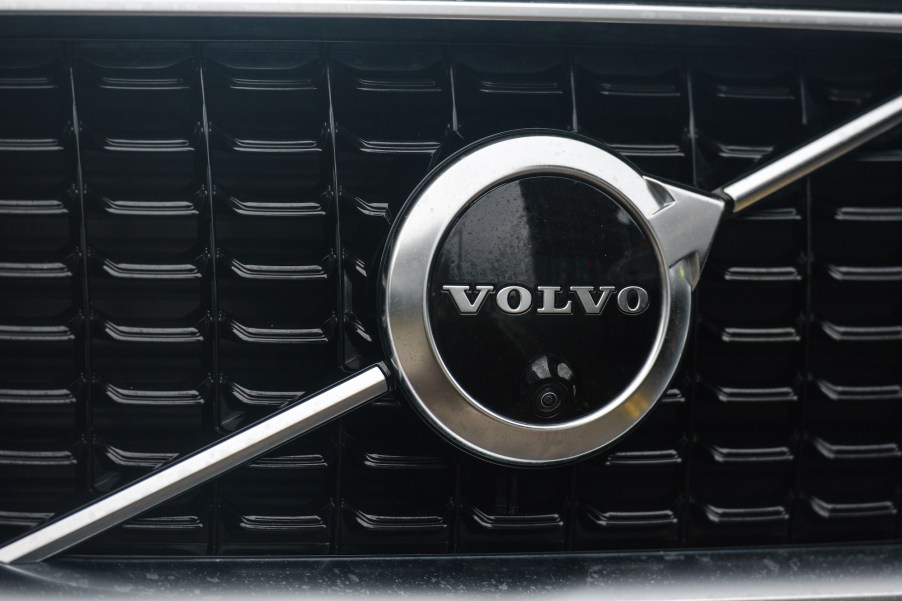
Is the Volvo Logo Sexist?
A logo can communicate a lot about a brand. It’s easily recognizable and establishes an identity. But what if a company’s logo offends a segment of the population? Will some consumers stop purchasing the product? And what if the company’s intended meaning differs from interpretation? This is the case with Volvo‘s logo.
The meaning of the Volvo logo
In 1915, the Swedish company Volvo produced bearings for cars. But five years later, it stopped. In 1926, Volvo returned, this time manufacturing cars along with bearings and other transportation items, Volvo Cars explains. That’s when it adopted the symbol for iron as its logo.
The logo is a circle with an arrow pointing diagonally out of the top right. The name “Volvo” reads horizontally through the middle of the circle. The arrow symbol comes from an old ideogram in Western culture representing the planet Mars. It also represents the Roman god of warfare of the same name, along with iron. When the ancient Greeks wrote about iron, they used the symbol for Mars. The shorthand symbols eventually transformed from Greek letters into a circle with an arrow. And the symbol for copper and Venus became a circle with a cross below it, Gizmodo reports.
Scientists continued to use those symbols to indicate iron and copper. Carolus Linnaeus was the first to use the symbols to indicate male (the arrow) and female (the cross). They appeared in Plantae hybridae (1751) regarding male and female plant parents.
The Volvo logo was intended to form an association with the iron industry and represent strength, along with “safety, quality, and durability,” Volvo Cars says. The logo often appeared on a diagonal line on the front of the radiator and still looks similar on today’s Volvo cars.
So, is the Volvo logo sexist?
Is it sexist of Volvo to use a logo that represents only one gender? Though the logo is intended to refer to iron, many people likely recognize the arrow as the male symbol. Merriam-Webster defines “sexist” as “prejudice or discrimination based on sex” or “behavior, conditions, or attitudes that foster stereotypes of social roles based on sex.”
Volvo vehicles are branded with the male symbol. Though the logo is sexist in the sense of creating conditions that mark Volvo as male, which could be a concern in an industry historically dominated by men, it doesn’t prevent women from purchasing these vehicles.
Interesting fact: More women than men prefer Volvo vehicles
It turns out that women like Volvo vehicles. In 2013, Kelley Blue Book Market Intelligence reported that in the United States, “men are more likely to consider a vehicle from domestic American manufacturers or European luxury brands, while female new-car shoppers are more likely to consider a vehicle from an import automaker.”
Analysis of traffic on the KBB website showed that women were 119 percent likelier than men to shop for a new Volvo. It also found that men were 174 percent likelier than women to shop for a new Lincoln. Kelley Blue Book explained the difference in interest in Volvo by the degree of importance men and women placed on vehicle safety. It found that 76 percent of women looked for safety features in a new vehicle, while 61 percent of men did the same. Women also looked for value, affordability, and fuel efficiency, and men placed more emphasis on heritage, rugged features, or exterior design
Volvo’s logo is intended to represent iron, but like it or not, it’s also the male symbol. Though that doesn’t make Volvo a sexist company, it does give an obvious masculine reference, marking Volvo as male. The logo itself sends a sexist message, but interestingly, at least in 2013, the car brand was actually more popular with women due to its emphasis on safety and value.


